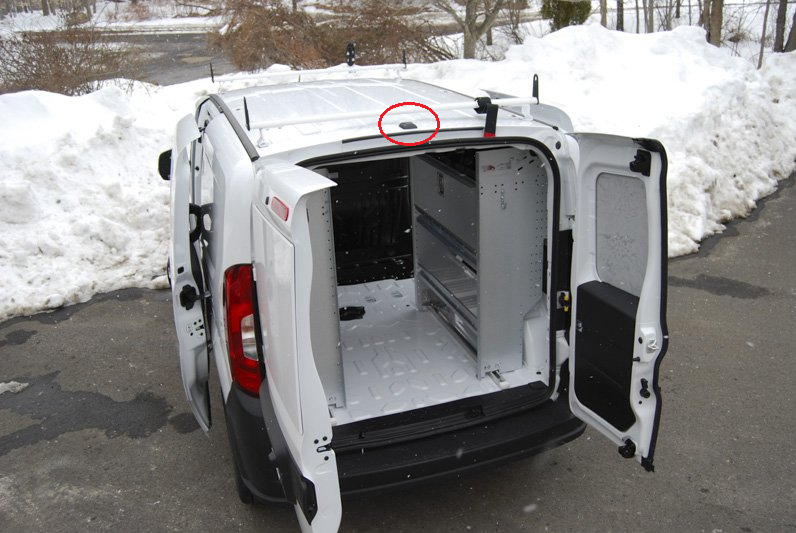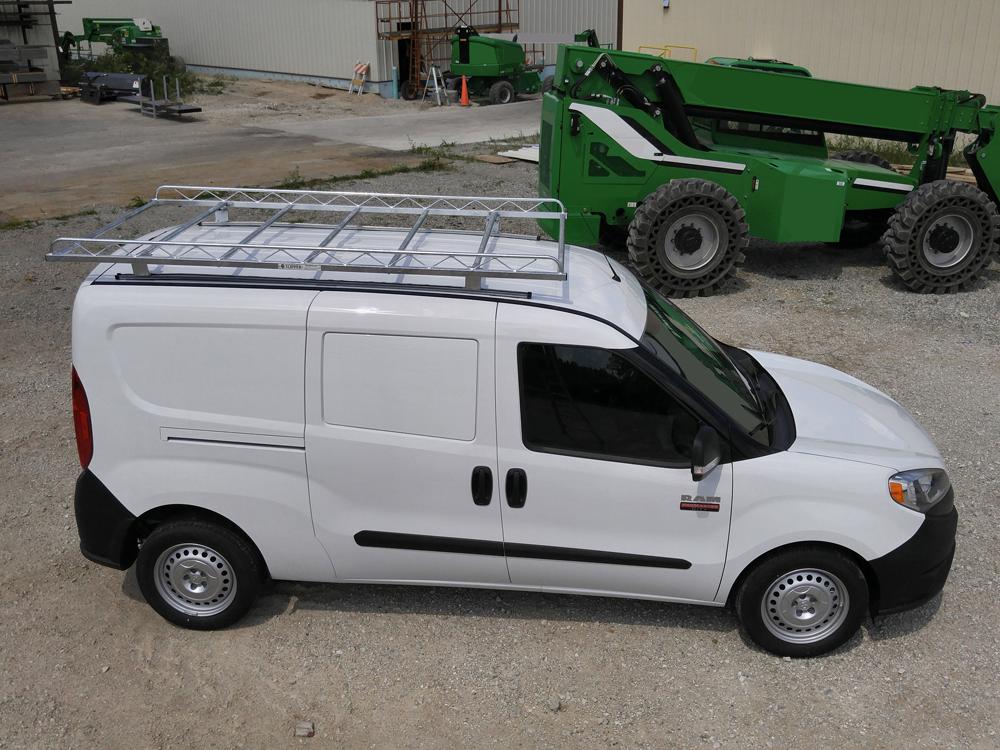thatswhatsup
Active member
- Joined
- Dec 17, 2015
- Messages
- 33
- Reaction score
- 0
Hey Everyone!!
Still trying to plan out a solar setup for my van without drilling or cutting into the van (Ram Promaster City)..
Leaning towards lead acid as Lifepo4 and AGM are not well suited for budget solar, beginners, or especially both.
Also want to keep the batteries outside if I can, although I know many have survived just fine with lead acid batts in a non vented van. I just don't want to take the chance.
I was told the satellite radio / gps antennae on the roof can be removed exposing a large(ish) hole to route cables into the van:

(not my van)
Hopefully that should be good access for solar panel cable routing, and the plan was to mount the batteries under the van where the spare tire should go, BUT that will require cutting/drilling as there is no access to beneath the vehicle from inside.
So I started looking for more basket style roof racks like this:

Question is-- If protected from the elements, can the batteries be mounted on the roof rack with the panels?
Then I should be able to route all cables through the same sat antennae / gps hole (if its big enough).
If not, and if i HAVE to mount the batteries beneath the van, is it realistic to route the battery cables back up to the roof so I can get them through that hole and into the van without cutting or drilling a new hole for the batteries?
sounds crazy, but if the cables were painted to match the van and were flush against the body, it might not stand out that much.
Then again, im not even sure if the cables themselves can be that long without affecting power.
Any input or ideas? Thanks as always!!
Still trying to plan out a solar setup for my van without drilling or cutting into the van (Ram Promaster City)..
Leaning towards lead acid as Lifepo4 and AGM are not well suited for budget solar, beginners, or especially both.
Also want to keep the batteries outside if I can, although I know many have survived just fine with lead acid batts in a non vented van. I just don't want to take the chance.
I was told the satellite radio / gps antennae on the roof can be removed exposing a large(ish) hole to route cables into the van:

(not my van)
Hopefully that should be good access for solar panel cable routing, and the plan was to mount the batteries under the van where the spare tire should go, BUT that will require cutting/drilling as there is no access to beneath the vehicle from inside.
So I started looking for more basket style roof racks like this:

Question is-- If protected from the elements, can the batteries be mounted on the roof rack with the panels?
Then I should be able to route all cables through the same sat antennae / gps hole (if its big enough).
If not, and if i HAVE to mount the batteries beneath the van, is it realistic to route the battery cables back up to the roof so I can get them through that hole and into the van without cutting or drilling a new hole for the batteries?
sounds crazy, but if the cables were painted to match the van and were flush against the body, it might not stand out that much.
Then again, im not even sure if the cables themselves can be that long without affecting power.
Any input or ideas? Thanks as always!!



